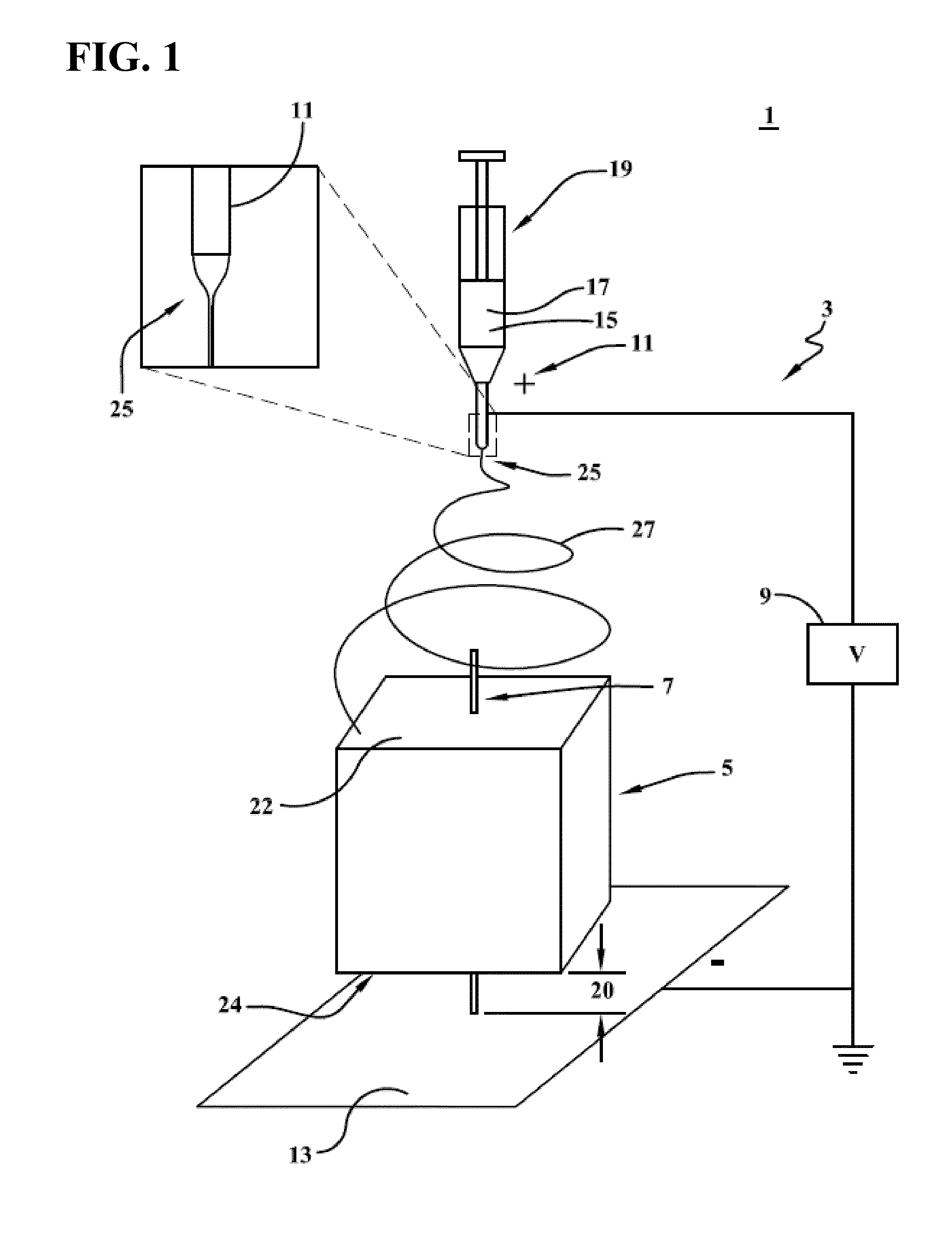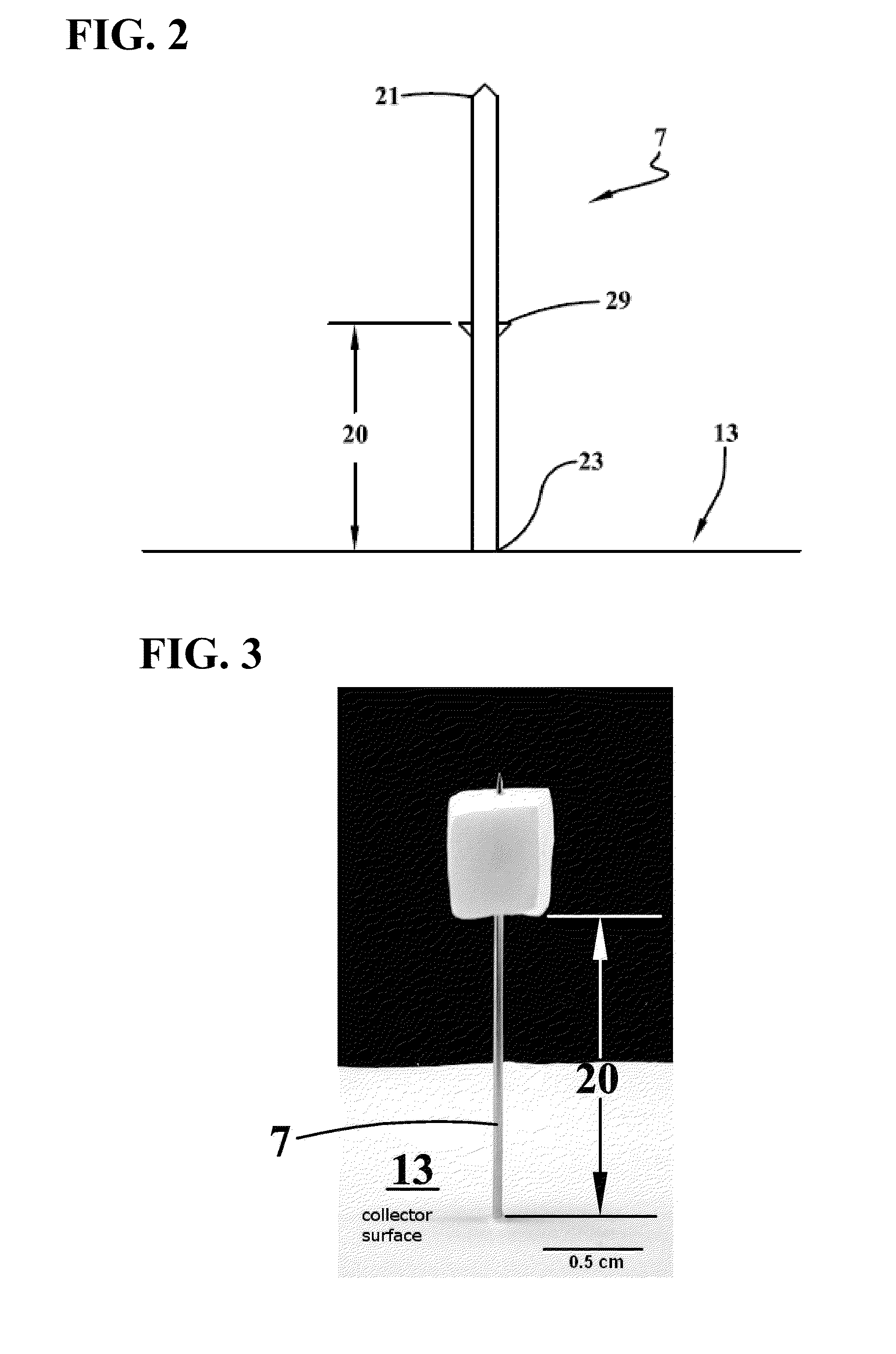Apparatus and method for electrospinning a nanofiber coating on surfaces of poorly conductive three-dimensional objects
- Summary
- Abstract
- Description
- Claims
- Application Information
AI Technical Summary
Benefits of technology
Problems solved by technology
Method used
Image
Examples
example 1
Methods and Materials
[0080]Preparation of Nanofiber-Coated Scaffolds
[0081]A basic electrospinning apparatus was experimentally adapted with the addition of a single, fine-point needle to the flat plate collector. A 1.0% (w / v) solution of PLLA (700 kDa, Polysciences, Warrington, Pa.) in chloroform (Sigma-Aldrich, St. Louis, Mo.) was prepared and stirred continuously over a 12 hour period. The solution was then loaded into a 5 mL syringe (Luer-Lok tip, BD, Franklin Lakes, N.J.) having a blunt-tip needle (25 gauge, ½ inch in length, BD) attached to it. The syringe was placed into the syringe pump (NE-300, New Era Pump Systems, Farmingdale, N.Y.), and the positive electrode from a high-voltage power supply (ES60-10W, Gamma High Voltage Research, Ormond Beach, Fla.) was connected. A fine (0.5 mm diameter, 35 mm length) stainless steel needle was attached to a flat, grounded collector, and the end of the needle was inserted by hand through each of a number of poorly conductive, pre-formed...
PUM
| Property | Measurement | Unit |
|---|---|---|
| Electrical conductivity | aaaaa | aaaaa |
| Electrical conductor | aaaaa | aaaaa |
| Biodegradability | aaaaa | aaaaa |
Abstract
Description
Claims
Application Information
 Login to View More
Login to View More - R&D
- Intellectual Property
- Life Sciences
- Materials
- Tech Scout
- Unparalleled Data Quality
- Higher Quality Content
- 60% Fewer Hallucinations
Browse by: Latest US Patents, China's latest patents, Technical Efficacy Thesaurus, Application Domain, Technology Topic, Popular Technical Reports.
© 2025 PatSnap. All rights reserved.Legal|Privacy policy|Modern Slavery Act Transparency Statement|Sitemap|About US| Contact US: help@patsnap.com



